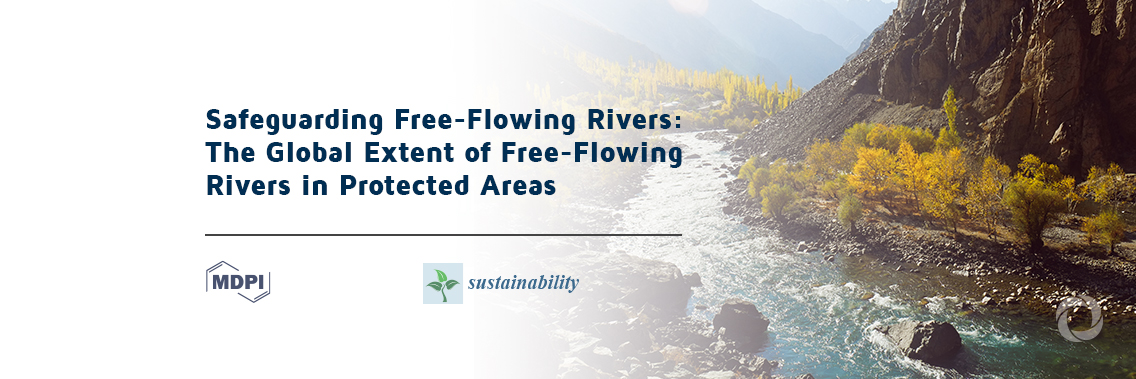New science about the fate of freshwater ecosystems released on May 12 by the journal Sustainability, finds that only 17% of rivers globally are both free-flowing and within protected areas, leaving many of these highly-threatened systems – and the species that rely on them – at risk.
“Populations of freshwater species have already declined by 84% on average since 1970, with degradation of rivers a leading cause of this decline. As a critical food source for hundreds of millions of people, we need to reverse this trend” said Ian Harrison, Freshwater Specialist at Conservation International.
“While 17% of all free-flowing rivers are within protected areas, in most countries the level of protection for large rivers is far lower,” said Jeff Opperman, World Wildlife Fund’s (WWF) global lead freshwater scientist, “and it’s these large rivers that are most crucial for supporting fisheries that support rural communities.”
As the world looks to establish new conservation targets at the UN Convention on Biological Diversity meeting later this year, scientists are calling on policymakers to prioritize increasing protection of freshwater ecosystems and species and to better integrate land and water conservation.
“Free-flowing rivers and other naturally functioning freshwater ecosystems sustain biodiversity and the food supply chain, drinking water, economies, and cultures for billions of people worldwide. Therefore, their protection is critical to sustaining these values,” said Jonathan Higgins, Senior Freshwater Science Advisor at The Nature Conservancy
A newly formed coalition of water resource experts – including representatives from academia as well as WWF, Conservation International, and The Nature Conservancy, among other entities – coordinated this first-of-its-kind collection of papers focused exclusively on durable protections for free-flowing rivers, with the aim of offering a blueprint to policymakers so they can integrate the best available science into environmental action plans.
There is no global framework focused specifically on river protection, and freshwater protection receives less attention and funding than comparable efforts for marine and terrestrial systems.
The collection of 15 studies with authors from throughout the world offers examples of free-flowing river protections through the application of scientific research, law, policy, and on-the-ground implementation of restoration and management strategies.
“These ecosystems are among the most understudied and under-protected in the world, and they are at risk from further severe alteration and degradation by a range of threats, including poorly sited dam construction, overfishing, excessive water extraction, and pollution,” said Perry, a water resource geographer.
The article topics range from global assessments to local case studies, including discussion of a framework that defines durable river protection, safeguarding free-flowing rivers through various policy mechanisms, adaptive management of the Malkumba-Coongie Lakes Ramsar site in Australia, the biological and cultural importance of sustainable floodplains in North Africa, and more. The issue also features rivers in India, Mongolia, Mexico, China, and the United States. Several articles take an in-depth look at specific freshwater ecosystems and offer insights that can be applied elsewhere.
“The recommendations made in this Special Issue for more forward-thinking protection and wise use of our inland aquatic resources are timely. Wetlands are a powerful nature-based solution to the many challenges the world is facing. Taking action now for wetlands is foundational for creating the future we want,” said Martha Rojas Urrego, Secretary-General of the Ramsar Convention on Wetlands.
As policymakers gather virtually this month to develop new global conservation goals, experts are calling for improved global targets for river protection. There is clear scientific evidence for the value of free-flowing rivers, including their ability to sustain migratory fish and to deliver the sediment needed to maintain river deltas—home to 500 million people and some of the most productive agricultural land on the planet—and prevent them from sinking and shrinking. Due to these values, researchers are calling for increased protections for free-flowing rivers as part of river basin management strategies.

